Discover 9 hidden attractions, cool sights, and unusual things to do in Lambourn (United Kingdom). Don't miss out on these must-see attractions: Ashdown House, Watts Bank, and Membury Camp. Also, be sure to include Westfield Farm Chalk Bank in your itinerary.
Below, you can find the list of the most amazing places you should visit in Lambourn (England).
Table of Contents
Ashdown House
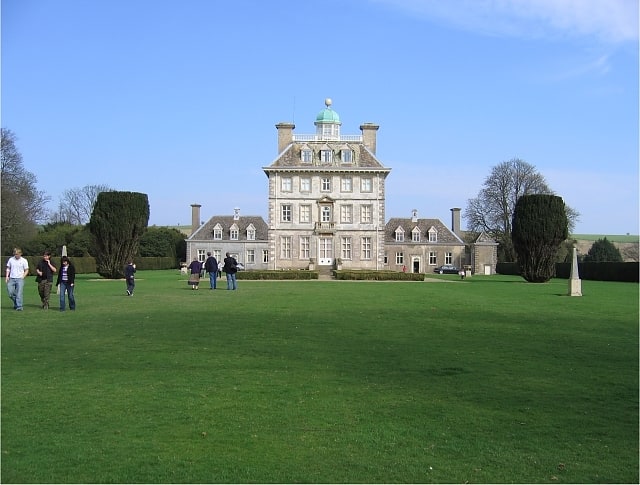
Tourist attraction in England. Ashdown House is a 17th-century country house in the civil parish of Ashbury in the English county of Oxfordshire. Until 1974 the house was in the county of Berkshire, and the nearby village of Lambourn remains in that county.[1]
Watts Bank

Nature preserve in England. Watts Bank is a 1.9-hectare nature reserve south of Lambourn in Berkshire. It is managed by the Berkshire, Buckinghamshire and Oxfordshire Wildlife Trust. It is designated a biological Site of Special Scientific Interest as White Shute.
Watts Bank is a small chalk grassland bank. It has had over 30 butterfly species recorded.[2]
Membury Camp
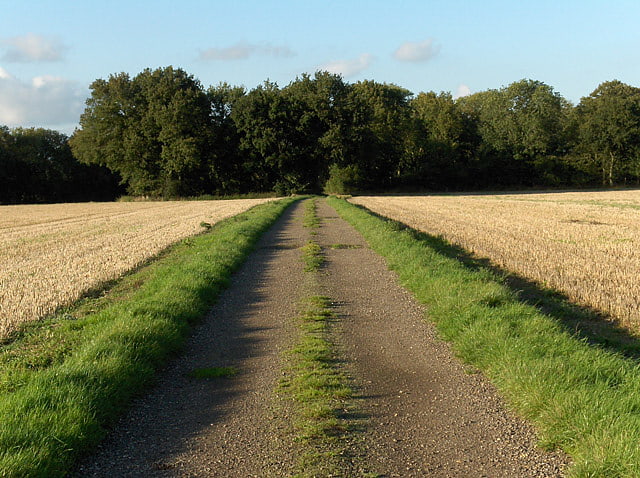
Historical landmark in England. Membury Camp, or Membury Fort, is the site of an Iron Age hill fort located on the borders of Wiltshire and Berkshire,. The site encompasses 14 acres, and is situated in the south-western corner of a small plateau. The circular earthworks are completely shrouded in trees and inside the walls it is mostly arable farmland. To the northeast, in the Berkshire segment, the camp is totally wooded by a small copse, Walls Copse, which covers a quarter of the site. To the north and east the adjoining ground is flat, but to the south and west it falls away steeply, providing a natural defence. The camp consists of a single ditch with banks on either side and encloses and area measuring 390m by 490m. A gap in the east with inturning flanks is probably an original entrance though it is mutilated and overgrown. Other gaps in the banks appear to be more modern. A possible hut circle is visible as a cropmark situated at the south end of the hill fort. The east side of the earthwork has been partly destroyed by the construction of a wartime airfield, RAF Membury. The site has not been excavated but a number of prehistoric finds have been found in the vicinity. It is a scheduled ancient monument no. 228970 There have been several collections of pottery found, in 1977, 1980 and 1987 Other significant finds have also included for flint artefacts from the mesolithic era, and flint tools from the neolithic era, prior to the Iron Age.[3]
Westfield Farm Chalk Bank

Westfield Farm Chalk Bank is a 14.1-hectare biological Site of Special Scientific Interest west of East Garston in Berkshire.[4]
Cleeve Hill SSSI
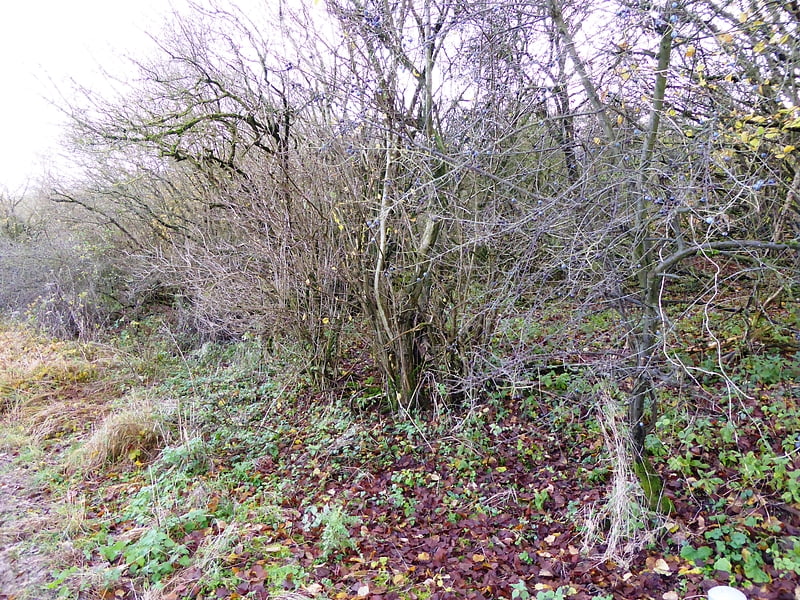
Cleeve Hill is a 4-hectare biological Site of Special Scientific Interest south of Lambourn in Berkshire.
Cleeve Hill is a sloping chalk grassland site with mixed scrub in the northern part. It is in the North Wessex Downs, which is an Area of Outstanding Natural Beauty.[5]
Park Farm Down
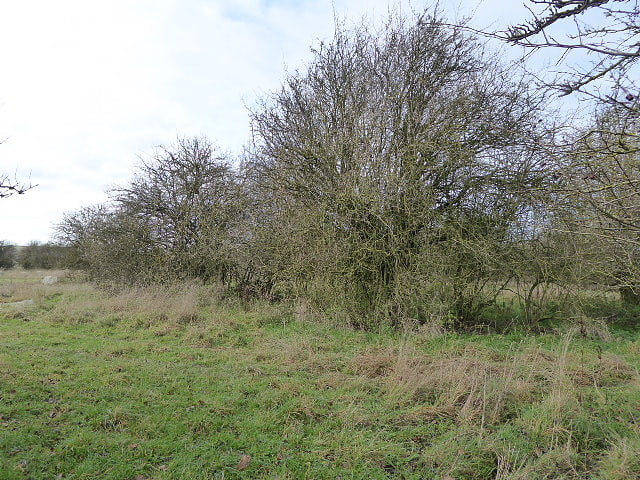
Park Farm Down or Parkfarm Down is a 3.3-hectare biological Site of Special Scientific Interest north-west of Lambourn in Berkshire. It is in the North Wessex Downs, which is an Area of Outstanding Natural Beauty.[6]
Ashdown Park
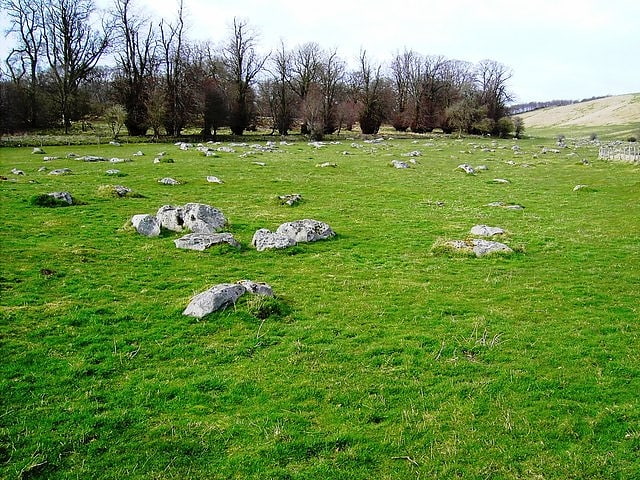
Ashdown Park is a 9.3-hectare biological Site of Special Scientific Interest south of Ashbury in Oxfordshire. The SSSI is part of the park of Ashdown House.
The park has been designated an SSSI because of the lichens on its many sarsen boulders. These are in parkland which is heavily grazed to ensure that the lichens, which have taken centuries to grow, do not become shaded. Noteworthy species include Aspicilia caesiocinerea, Buellia saxorum, Candelariella coralliza, Rinodina atrocinerea and Parmelia loxodes.
The park is owned by the National Trust and is open to the public.[7]
Croker's Hole

Croker's Hole is a 4.4 hectare biological Site of Special Scientific Interest north of Upper Lambourn in Berkshire.
The site is a narrow grassland valley, which is one of the most florally diverse chalk downlands in Berkshire. The dominant plants are upright brome and tor-grass, and it is the only site in the county which has the nationally scarce bastard toadflax.
There is access from a footpath from Seven Barrows to Hangman's Stone.[8]
Fognam Chalk Quarry
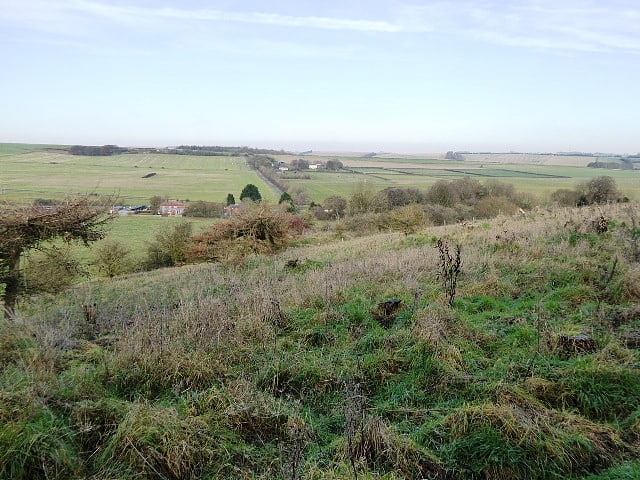
Fognam Chalk Quarry is a 3-hectare geological Site of Special Scientific Interest west of Upper Lambourn in Berkshire. It is a Geological Conservation Review site. It is in the North Wessex Downs.
The site is private land with no public access.[9]